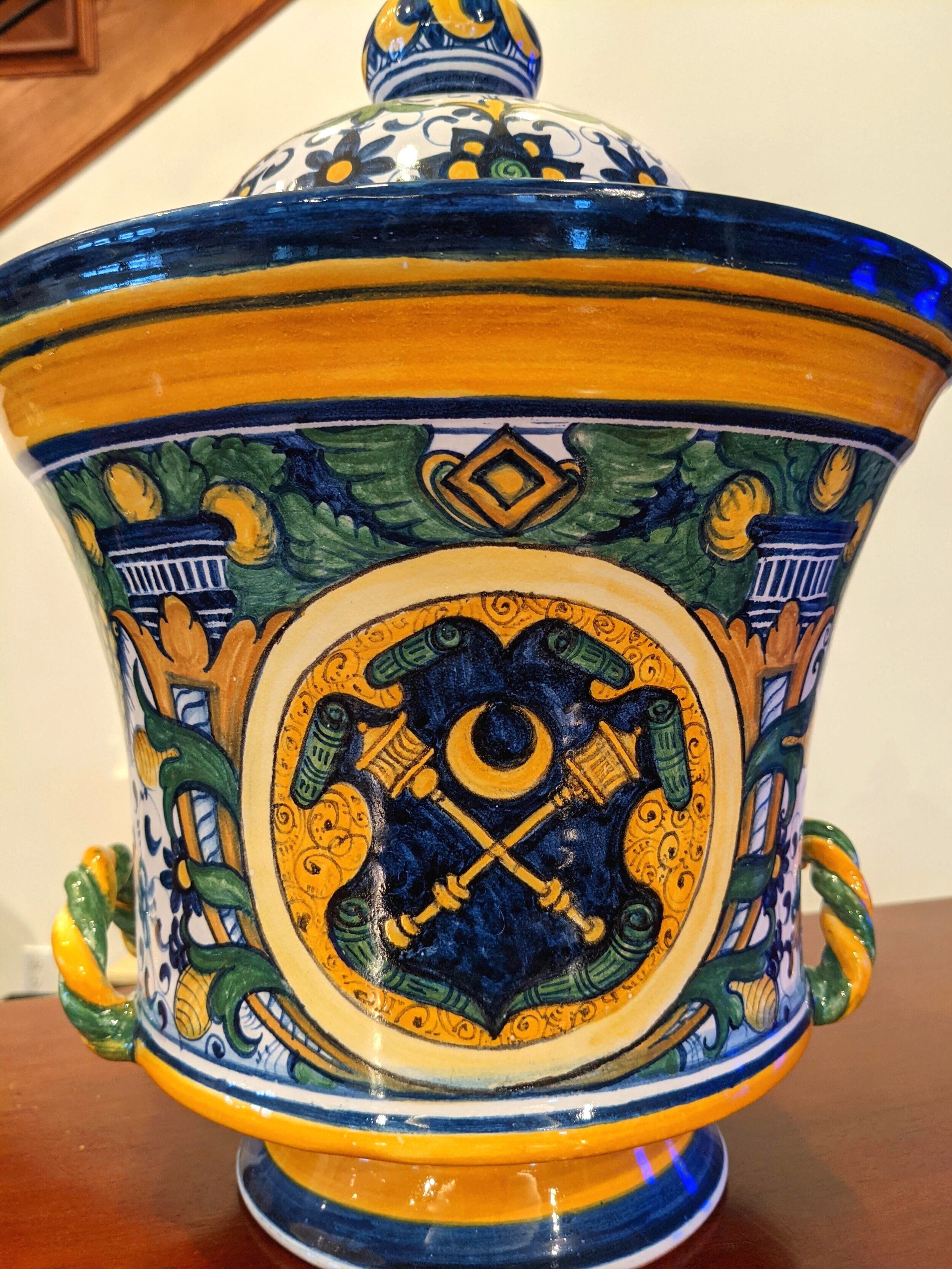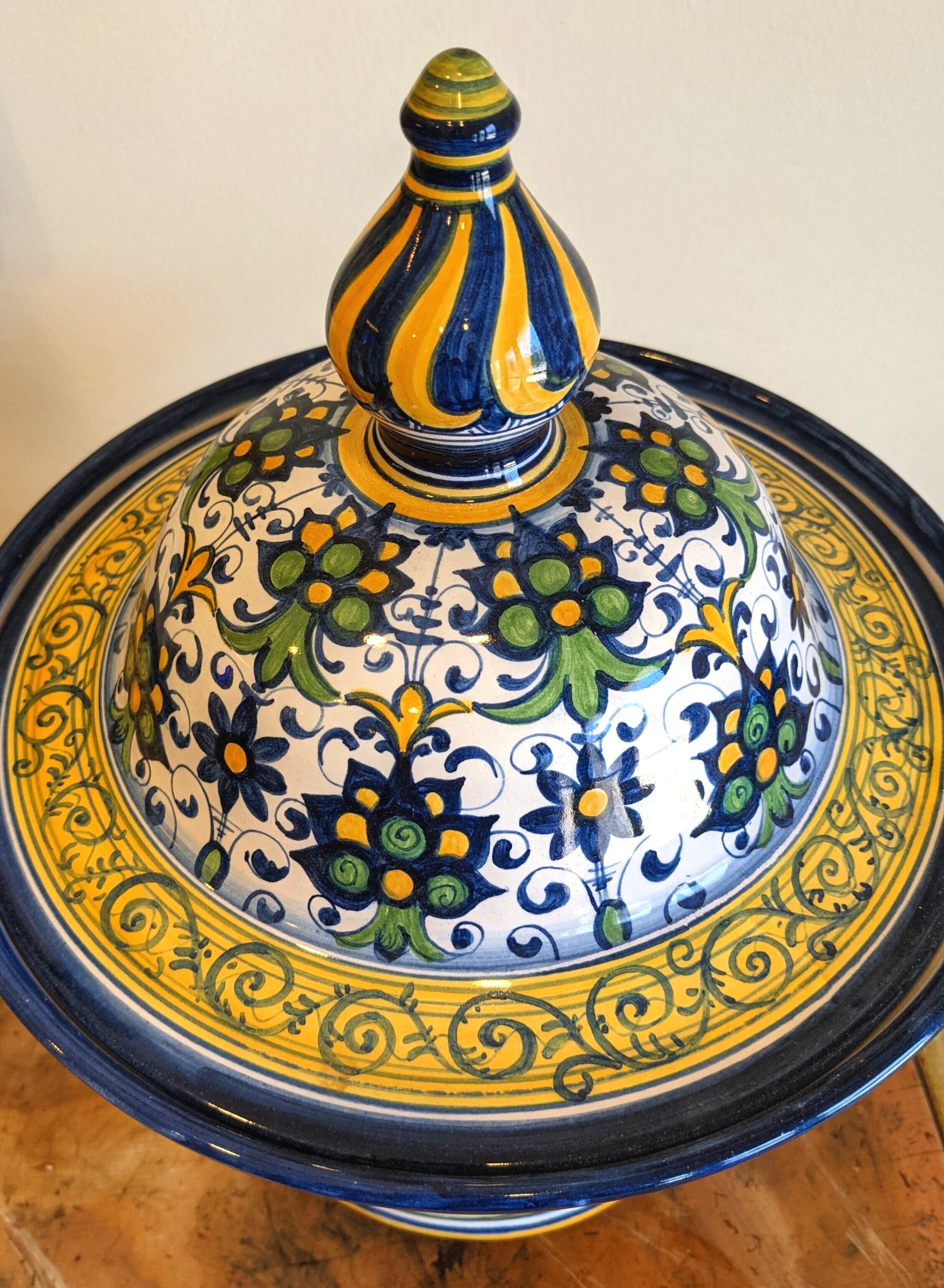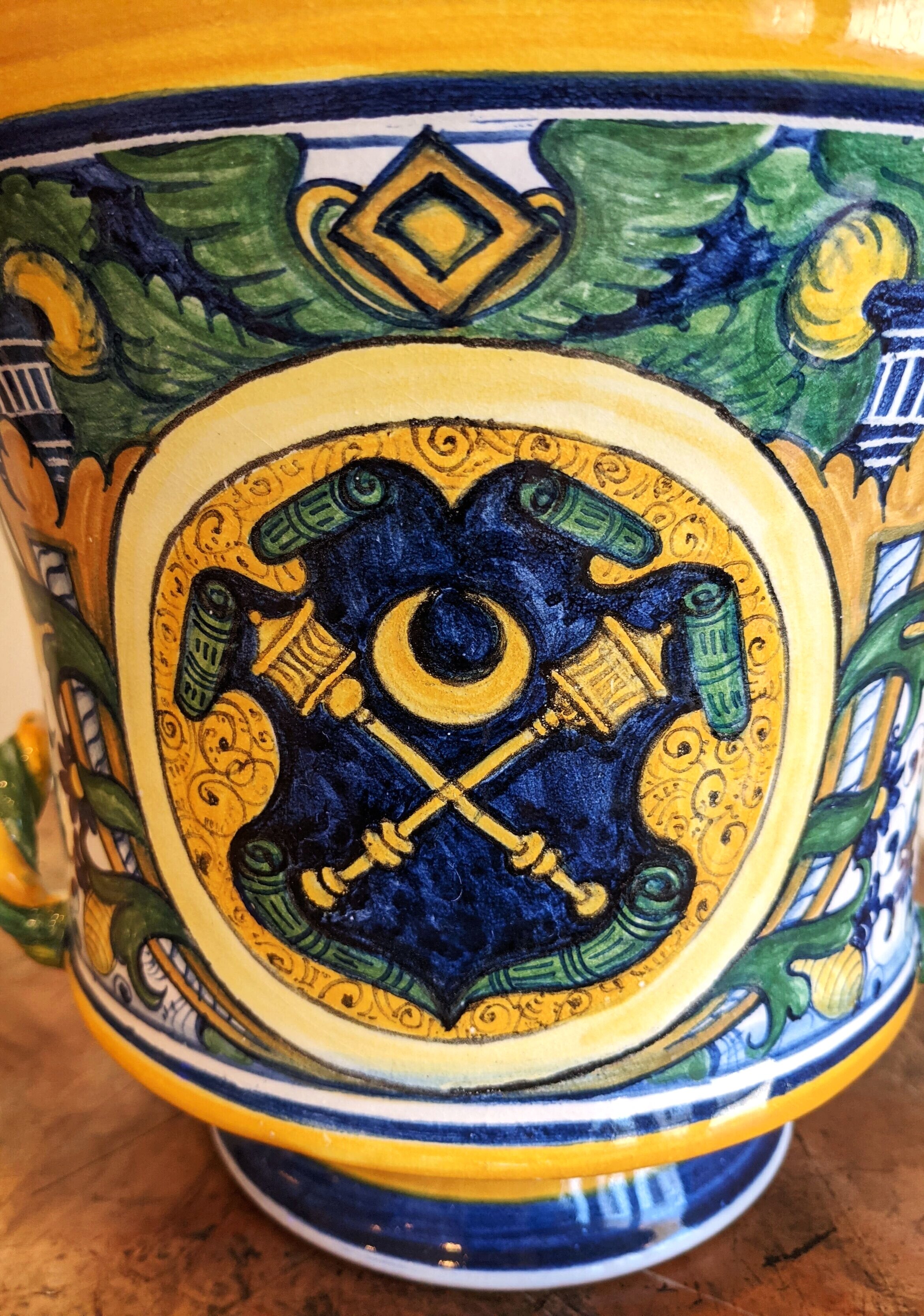ARTIST
Karel Hanák
TITLE
Haban faience jug
DATE
Unknown
MEDIUM
Clay
DIMENSIONS (approx.)
Width (at curve) 13 in. x Height 16 in. (33 cm x 40.5 cm)
CREDIT LINE
Captain Danny Billingsley
CURRENT LOCATION
Czech Center Museum 4920 San Jacinto St. Houston, TX 77004
Entrance Hall
ACCESSION NUMBER
Clib02
CLASSIFICATION
Pottery
PROVENANCE
Hodonín
Haban Faience Pottery
Karel Hanák is a Czech artist known for his recreations of Haban faience, a tin oxide-glazed earthenware style similar to majolica. Hanák worked as a master at a ceramics workshop specializing in majolica in Dubňany, located in the South Moravian region of the Czech Republic. He began studying Haban faience to increase their range. Several of his pieces are on display at the CCMH, just as their Old World predecessors decorated the homes of the Austrian elite.
Haban faience was known for its fine white glaze resembling porcelain, delicate brushwork, and for being made by a religious sect caught between the centuries-long battle for European domination between Protestantism and Catholicism. The term Haban denotes Anabaptists, a fringe Reformation movement who believed in adult baptism and communal living. As religious outsiders who were often persecuted, they formed their own communities outside of mainstream society.
However, their pottery became widely known for its beauty and quality. Early pieces displayed a heraldic or floral decorative style and strict use of yellow, blue, green, and manganese. This jug displays vivid use of the color palette, decorative borders, and blue edging characteristic of classical Haban faience.
The larger European religious conflicts pushed the Anabaptists through the Austrian empire in the 16th century. As they moved deeper into Eastern Europe, their traditionally strict styles adapted to Turkish or Catholic influences and a wider range of motifs. The Ottoman symbolism on this jug is an example of their increased exposure to cultural influences.
Demand for Haban faience decreased in the 1700s as Anabaptist communities were absorbed into Slovak culture. The almost-forgotten style has enjoyed a recent renaissance, however, as master artists like Hanák revive these Old World styles. In 2009, the Czech Minister of Culture awarded him the title Holder of the tradition of folk crafts in the field of Haban faience.



